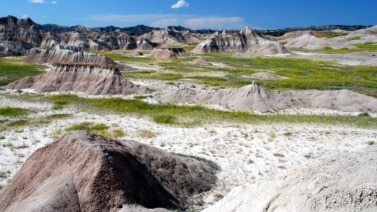This week on our national parks journey, we explore a unique place where two deserts meet. The hot, harsh, rocky landscape is home to a rare and strange-looking tree. In fact, the park gets its name from this iconic plant.
Welcome to Joshua Tree National Park, in southeastern California.
The limbs of Joshua Trees stretch and twist upward in all directions. At the end of each limb are sharply pointed green leaves. The plant looks like a large cactus, and can grow over 12 meters tall.
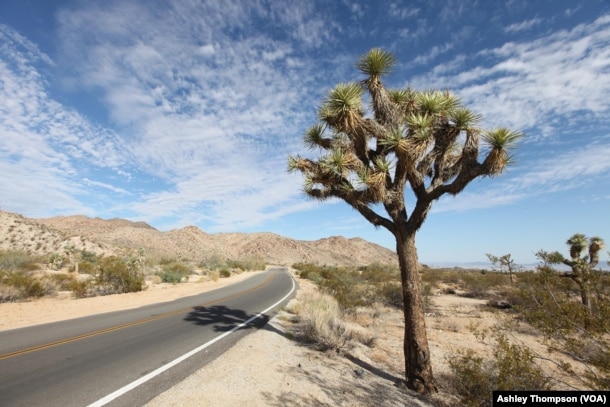
But, as the National Park Service explains, Joshua Trees are not really even trees. They are succulents that belong to the yucca family. Succulents are desert plants can hold a lot of water inside them.
Joshua Trees are not exactly beautiful. An early explorer to the area once described them as “the most repulsive tree in the vegetable kingdom.”
But park visitors are amazed by the wild-looking forests of Joshua trees.
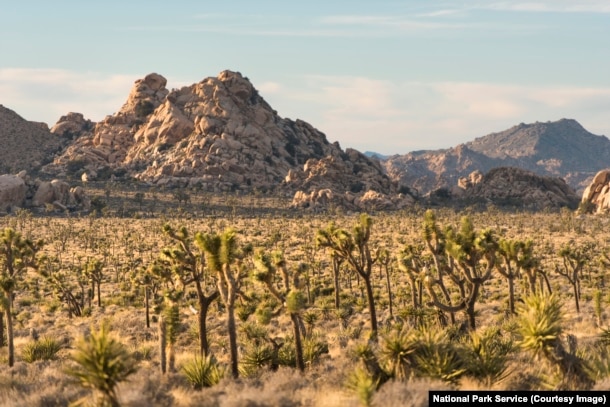
The Mormon religious group is said to have given the plant its name. Mormon settlers reportedly thought it looked like the Christian holy figure Joshua, his arms held out, guiding travelers to the promised land.
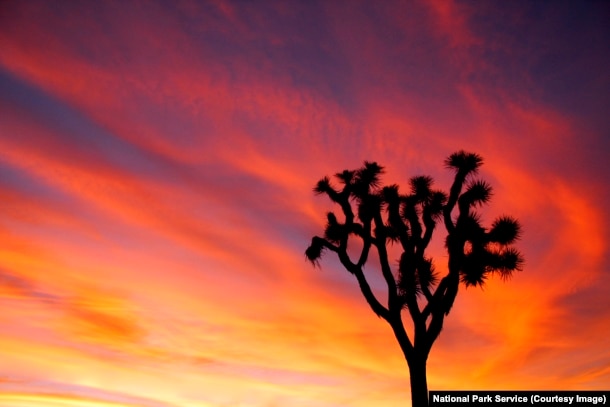
Joshua trees thrive in the climate of the Mojave, one of two deserts within the park. The Mojave is a high desert. It is 900 meters above sea level. It is also relatively cool and wet.
The Mojave Desert meets up here with the Colorado Desert. The Colorado is a lower desert. It makes up the eastern part of the national park.
Much of the park sits within the “overlap” of the two deserts. The overlap creates a diverse ecosystem, where many plants and animals thrive.
Within the park you can find bighorn sheep, desert tortoises, iguanas and black-tailed jackrabbits.
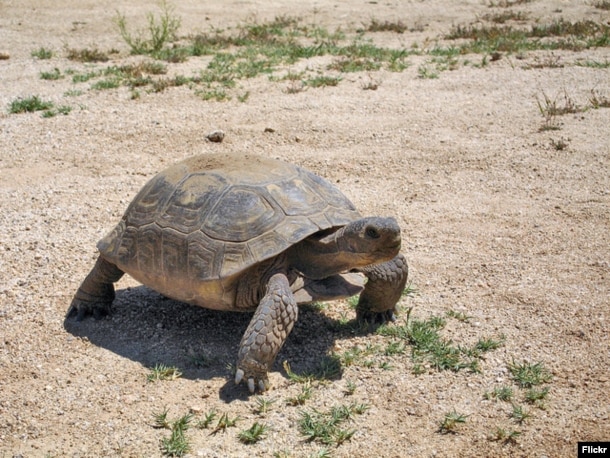
The park is also home to 250 kinds of birds, like the red-tailed hawk, the roadrunner and the Scott's oriole.
After spring rainstorms, desert wildflowers burst to life in colorful display. The blooms on Joshua trees are bright white. Cacti produce bright purple, red and orange wildflowers.

The blooms last just a few weeks before the hot summer heat becomes too strong.
Along with Joshua trees, large piles of rocks are another defining part of the park's landscape. The huge boulders sit stacked on top of each other. Roads and hiking trails lead visitors through paths of these boulders.
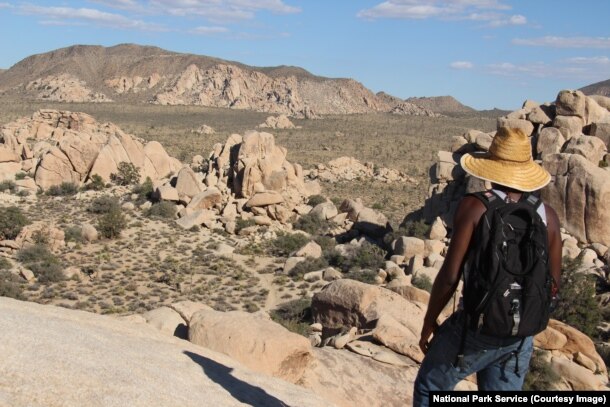
Joshua Tree National Park is over 320,000 hectares. It has many hiking and walking trails -- from long hikes that take all day to finish, to short ones, like the Hidden Valley trail. This trail takes you through an area that was once a place for cattle-stealing cowboys to hide out. The area's massive rock piles made for effective places to hide in the desert.
These huge boulder piles and rock walls have made Joshua Tree National Park world-famous for rock climbing and bouldering. The park has more than 8,000 climbing routes.
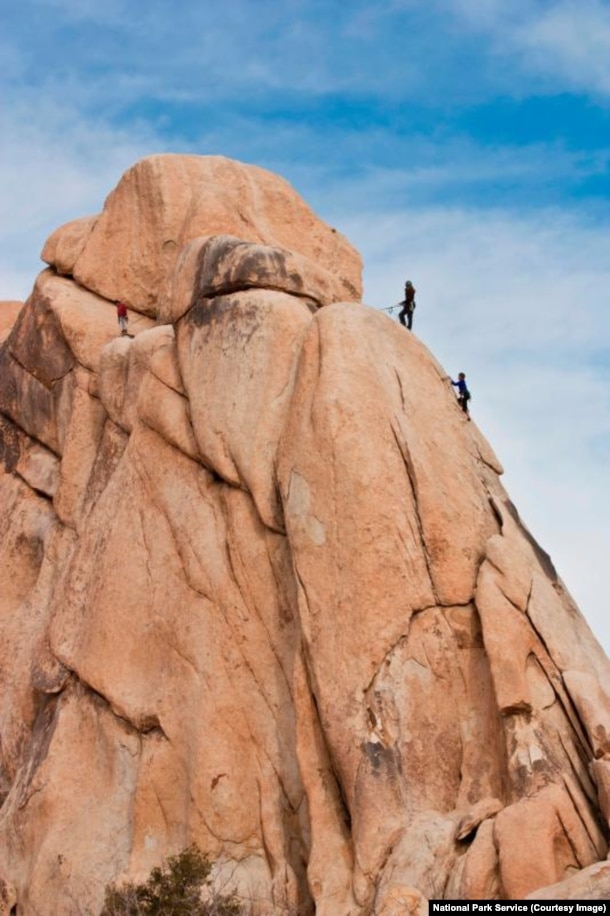
John Hochhausler often comes to Joshua Tree to rock climb and enjoy nature. He makes the three-hour drive from Los Angeles, where he is a lawyer.
“When you see the park from down low, it's beautiful, but when you see the park from 150, 200 feet up, it's amazing.”
Rinat Erlich visited the national park with Hochhausler. She is also a lawyer in Los Angeles. She had just tried rock climbing at Joshua Tree for the first time.
“We love it. We come here to walk on trails, last time we were here we rode Jeeps, which was so much fun. And, it's just a great place, a great outdoorsy place with a lot of character.”
I'm Caty Weaver.
And I'm Ashley Thompson.
Ashley Thompson wrote this report, with additional materials from the National Park Service. Caty Weaver was the editor.
What U.S. national park would you most like to visit? Let us know in the comments section!
Words in This Story
harsh - adj. unpleasant and difficult to accept or experience
iconic - adj. widely known
twist - adj. to bend or turn (something) in order to change its shape
succulent - n. a plant that stores water in its leaves or stems
repulsive - adj. causing strong dislike or disgust
amazed - v. to be surprised and in wonder
thrive - v. to grow or develop successfully
overlap - v. to lie over the edge of (something)
diverse - adj. made up of things that are different from each other
boulder - n. a very large stone or rounded piece of rock
cattle - n. cows, bulls, or steers that are kept on a farm or ranch for meat or milk
